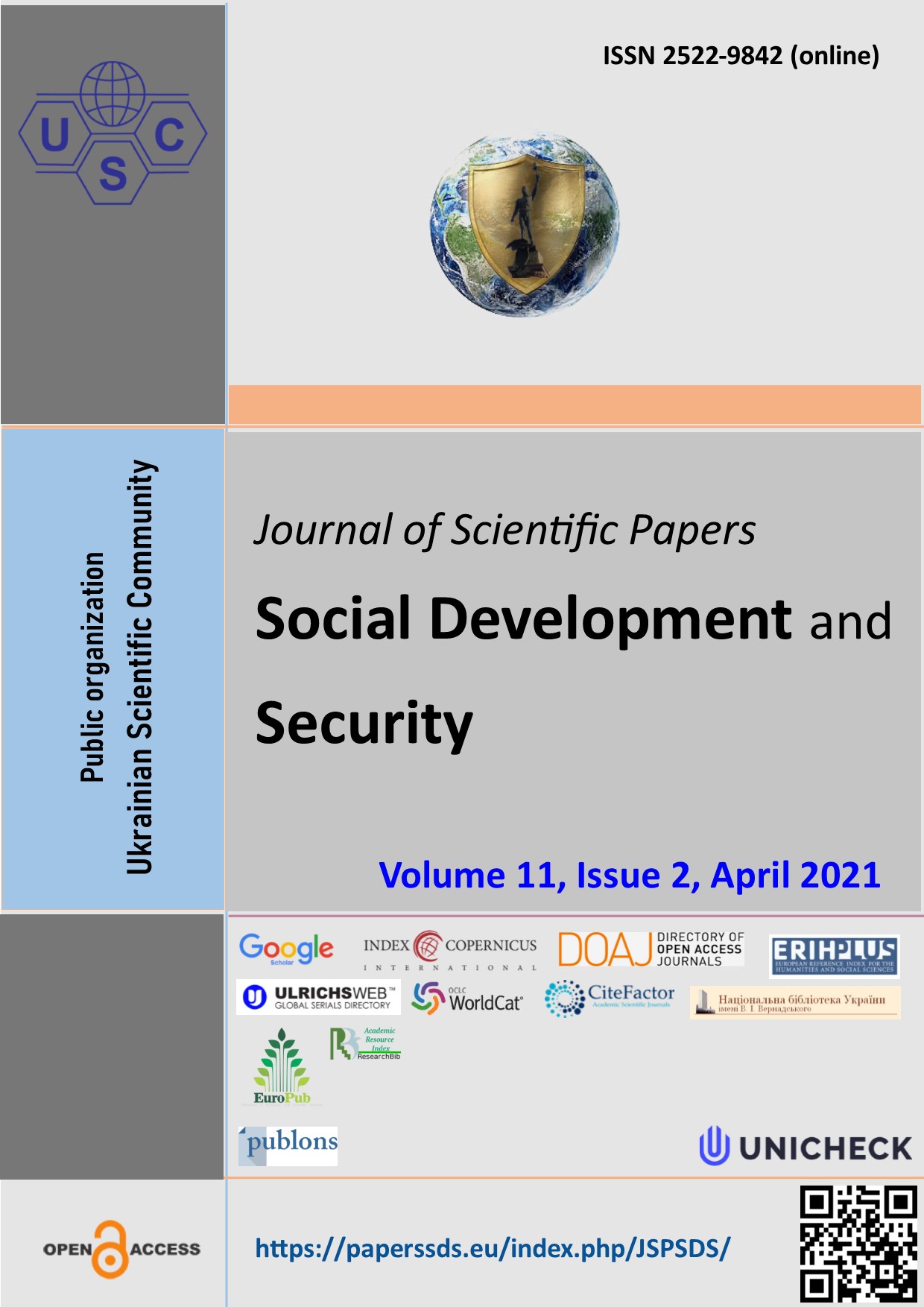Methodological approach to forecasting military expenditures of some countries of the world based on analysis of the dynamics of these expenses for a long-term period (1999-2020)
Abstract
Economic support plays a decisive role in strengthening the defense capability of any state. In most cases, the phenomena of wars and their beginning were stipulated by the struggle for resources, and sometimes, when resources were running out, hostilities were suspended. Plans for the development, construction and use of the armed forces are always developed taking into account the capabilities of the state. In addition, an analysis of the use of financial resources allocated by the state to ensure national security and defense makes it possible to find out the extent of its readiness for war. In the article, the authors propose a methodological approach to forecasting the country's military expenditures based on an analysis of the dynamics of these expenditures over a long-term period (more than twenty years). To analyze the dynamics and forecast of military expenditures, statistical data on the volumes of military expenditures of such countries as Lithuania, Poland, Great Britain, China, Germany, Russia, the USA, the Czech Republic, Hungary, Romania, Moldova and Ukraine were used. To calculate the indicators of dynamics, the authors proposed to compare each level of the series with the same basic level. To calculate the indicators of dynamics, each subsequent level of the series is compared with the previous one. The most important statistical indicator of the dynamics is the absolute growth, which is defined as the difference between the comparison of the two levels of the dynamic’s series in the units of the initial information. The proposed methodological approach to forecasting the military spending of some countries of the world based on the analysis of their dynamics makes it possible to obtain a qualitative picture that characterizes the attitude of the state to its own security, and also allows us to fairly reliably predict the volume of defense spending in countries with a stable economy. Further research will be related to the study of internal and external factors affecting the level of military spending in certain countries of the world.
Downloads
References
Малахов, В. С. Мировое военное производство и основные расходы на его содержание в контексте глобального финансового кризиса. Научный журнал КубГАУ. 2012. №84(10). URL: http://ej.kubagro.ru/2012/10/pdf/70.pdf
SIPRI Yearbook 2020: Armaments, Disarmament and International Security Summary // Stockholm International Peace Research Institute. 2020. URL: http://www.sipri.org/earbook/2013/files/SIPRIYB13Summary.pdf
Ben Moores, The IHS Balance of Trade 2014 – The Changing Worldwide Defence Market. Focus on: Eastern Europe, Middle East & Sub-Saharan Africa [Electronik resourse] / Ben Moores, Georgios Salapasidis, Paul Burton // IHS Aerospace, Defence & Security. – 2014. – URL: http://www.ihs.com/balanceoftrade
Craig Caffrey, Defence Budgets: a Global Recalibration / Craig Caffrey, Guy Eastman, Fenella McGerty // Senior Analysts Jane’s Defence Budgets, IHS Aerospace, Defence and Security. – Washington, D.C. and London, UK: 13 February 2014. 42 p.
Радвик Б. Военное планирование и анализ систем / Перевод с англ. В. Базарова / Под ред. А. М. Пархоменко Москва: Воениздат, 1972. 477 с.
Хомчак Р. Б., Семененко О. М., Бокій В. Г., Трегубенко С. С., Москаленко І. В. Аналіз та оцінка воєнно-економічних умов розвитку збройних сил країн світу та України. Зб. наук. пр. ЦНДІ ЗС України. Київ: 2019. № 5 (91). С. 91–109.
Харламова Г. Оцінка стабільності національної безпеки: нові рамки для аналізу. URL: http://ukraine2030.org/uk/blog/view/175-Ocinka-stabilnosti-nacionalnoyi-bezpeki-novi-ramki-dlja-analizu
Бэтлер А. Национальные интересы, национальная и международная безопасность. ПОЛИС. 2002. № 4. С. 146–158.
Горбулін В. П. Стратегічне планування: вирішення проблем національної безпеки. Монографія / В.П. Горбулін, А.Б. Качинський. Київ : НІСД, 2010. 288 с.
Общая теория национальной безопасности: Учебник / Под ред. А.А. Прохожева. Москва: РАГС, 2005. 344 с.
Ткаченко В.І., Смірнов Є.Б., Астахов О.О. Шляхи формування системи забезпечення національної безпеки. URL: www.hups.mil.gov.ua/article.zhups_2015_2_3
Шуляк П. І., Семененко О. М., Бокій В. Г., Совгіря Т. М., Пекуляк Р. О. Методичний підхід до оцінювання здатності Збройних Сил України до виконання покладених на них завдань з урахуванням ресурсних можливостей держави. Зб. наук. пр. ЦНДІ ЗС України. Київ. 2020. № 1 (92).
Україна. Офіційний сайт Державної служби статистики України: URL: www.ukrstat.gov.ua.
Україна. Офіційний сайт Міністерства фінансів України. URL: www.minfin.com.ua.
Щорічник СИПРИ 2019: озброєння, роззброювання й міжнародна безпека. Москва. Наука, 2019.
Abstract views: 1097 PDF Downloads: 262
The authors agree with the following conditions:
1. Authors retain copyright and grant the journal right of first publication (Download agreement) with the work simultaneously licensed under a Creative Commons Attribution License that allows others to share the work with an acknowledgment of the work's authorship and initial publication in this journal.
2. Authors have the right to complete individual additional agreements for the non-exclusive spreading of the journal’s published version of the work (for example, to post work in the electronic repository of the institution or to publish it as part of a monograph), with the reference to the first publication of the work in this journal.
3. Journal’s politics allows and encourages the placement on the Internet (for example, in the repositories of institutions, personal websites, SSRN, ResearchGate, MPRA, SSOAR, etc.) manuscript of the work by the authors, before and during the process of viewing it by this journal, because it can lead to a productive research discussion and positively affect the efficiency and dynamics of citing the published work (see The Effect of Open Access).
















